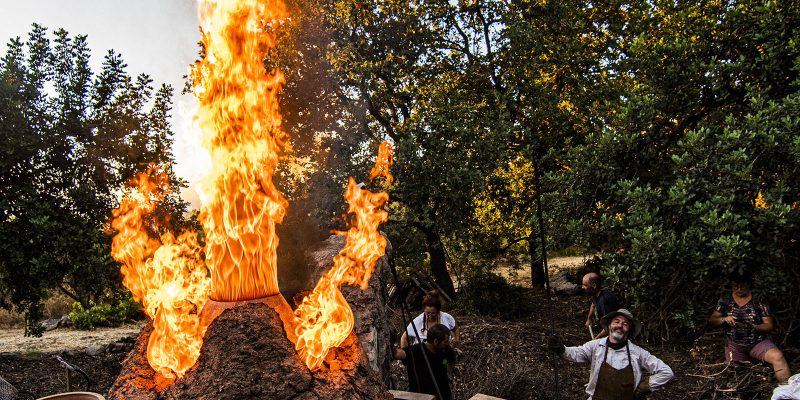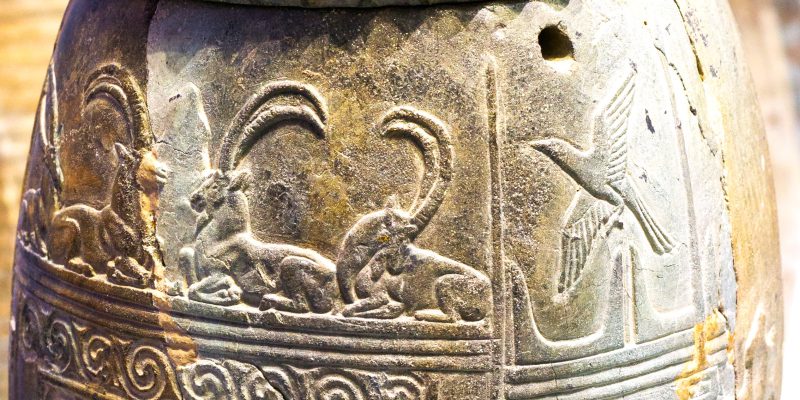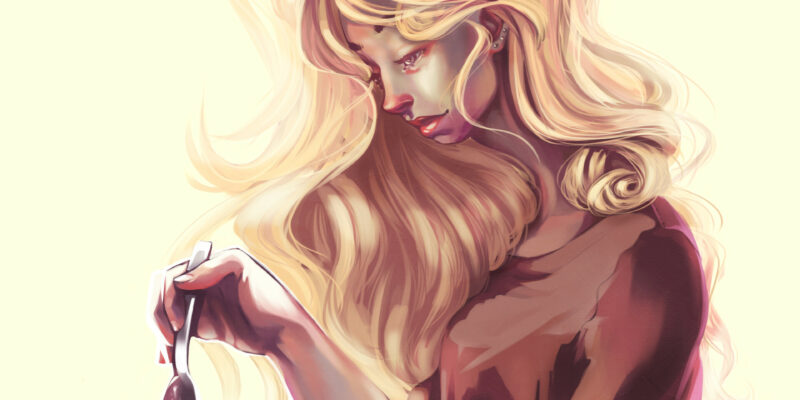At a small dojo on a narrow street to nowhere in Heraklion, Crete, a humble karate master named Georgos Soultatos has created a path toward excellence of body and spirit. Aiolos Shito Ryu Karate Do is a shrine not unlike those hidden places in Okinawa where father and son practiced together from midnight to dawn. As someone who’s only lived on this Greek island for seven years, I find the parallels between an art once forbidden in Okinawa sharp and surprising. I never expected a world-class Karate Sensei here.
Karate holds a deep meaning for anyone drawn to authentic martial arts. In a quiet dojo on Crete, Sensei Georgios Soultatos keeps the heart of Shito Ryu alive—away from crowded gyms and quick trends that consume us all these days. Here, the history and philosophy of Karate-Do shape every lesson, blending discipline with respect and forging something far deeper than fighting skill or self-defence.
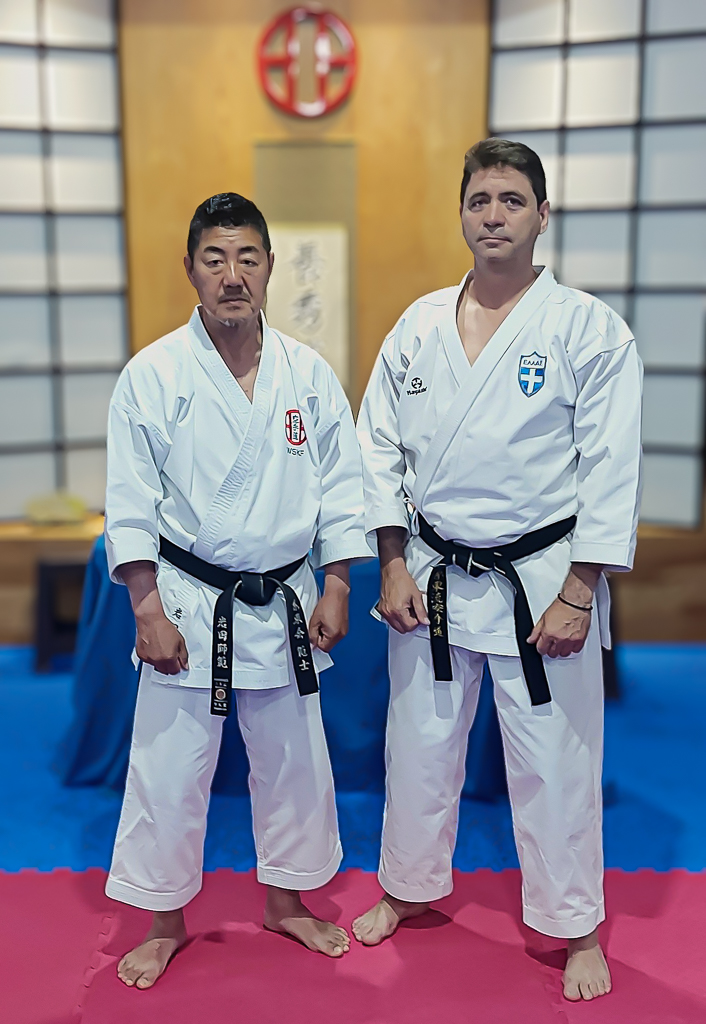
For those unfamiliar, Shito Ryu shines as one of Karate’s central styles, known for combining powerful movements and thoughtful techniques. This style of Karate stands out for its tradition and clarity. The students of Sensei Soultatos connect with a living martial art that has grown from its roots, offering those who train a more profound sense of purpose and skill. Karate Do is both a martial art and a philosophy, grounded in tradition and shaped by generations of dedicated teachers. To understand Shito Ryu and the teachings of Sensei Georgios Soultatos, it’s essential to look back at where Karate-Do began, the values it grew from, and the key practices that define every class.
Origins in Okinawa
Karate Do traces its roots to Okinawa, a small island with big cultural connections. Okinawa was a crossroads for traders from China, Japan, and Southeast Asia for centuries. Each visitor brought not only goods but also fighting techniques and new ideas.
Okinawan martial artists began blending local self-defence methods with Chinese and Japanese influences. Eventually, the methods became more refined. Training in the formative years was a secret practice, often held at night, since local rulers forbade weapons. This secrecy led to creative, effective forms based on open-hand combat. “karate” means “empty hand,” highlighting its weaponless roots.
Key milestones in Karate Do’s growth include:
- Integration of Chinese forms: Techniques from southern Chinese martial arts were introduced, shaping the early patterns.
- Spread to mainland Japan: In the early 20th century, Gichin Funakoshi and other masters traveled to Japan, teaching Karate in universities and dojos.
- Creation of styles like Shito Ryu: By the 1930s, master Kenwa Mabuni combined elements from different schools to form Shito Ryu, preserving both soft, circular Chinese techniques and complex, linear Okinawan methods.
Today, these traditions are alive in dojos like the one led by Georgios Soultatos on Crete, keeping the original spirit of Karate-Do in every movement. Over the decades since he first began teaching in the 1990s, Soultatos has taught hundreds of students of all ages, while learning as he travels his path. At 58, he looks and moves like a person half his age, proof positive that the discipline he teaches works absolutely.
Bushido and Karate Ethics
The spirit of Karate-Do runs deeper than punches and kicks. The art draws inspiration from philosophies like Bushido, the samurai code rooted in loyalty, honor, and respect. However, as Soultatos suggests, Bushido is too powerful a term for what Karate Do represents. He tells us that Shito Ryu does not seek to create warriors but instead fosters better human beings. This is symbolized by the Japanese concept of “kara”, which is emptiness. In developing an inner emptiness, one is capable of boundless development. This is part of Karate’s value system.
Still, the connection between Bushido and Karate Do can be seen in some of Soultatos’ dojo’s core rules:
- Respect: Each class begins and ends with a bow to the creator of Shito Ryu and another bow to the Sensei or teacher. It is not simply a habit but an illustration of respect for one’s teacher, training partners, and the self.
- Discipline: Not unlike the training of Samurai or the countless forms of martial arts, Karate-Do is about consistency and self-control being at the heart of training. The Sensei seeks to shape both technique and character for their students.
- Courage and humility: Students learn to face their own weaknesses with honesty and work steadily to improve.
For masters like Georgios Soultatos (6 Dan Black Belt), these ethics make Karate more than a sport. Students are taught the gift of living with dignity and purpose, connecting every technique to a set of enduring values.
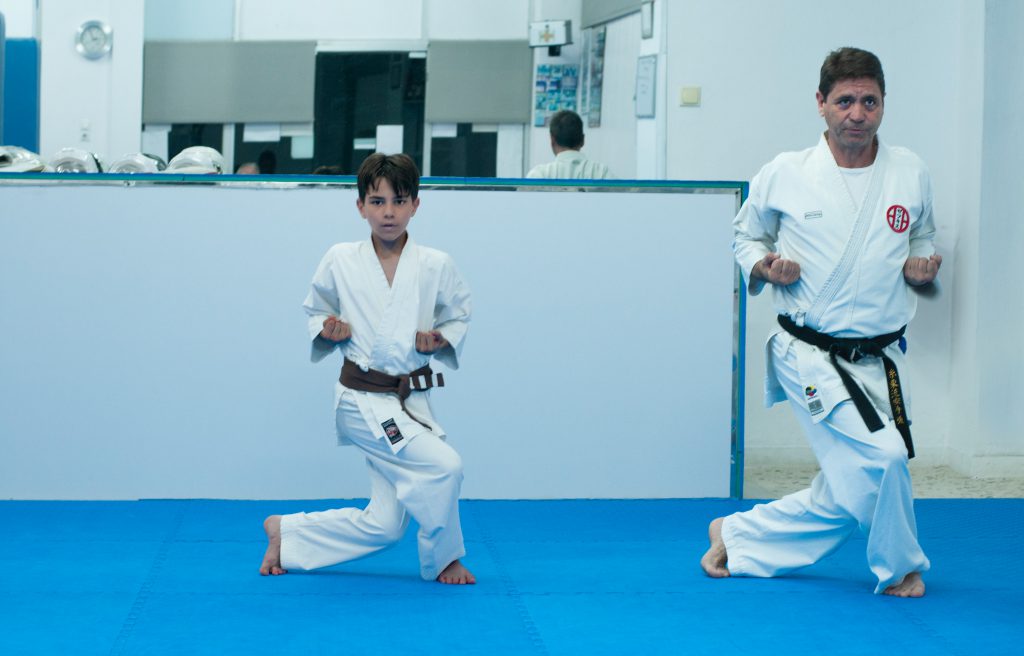
Core Techniques: Kihon, Kata, Kumite
The solid granite foundation of Shito Ryu sets its discipline apart from other karate styles. Every practitioner, beginner or advanced, builds their skills through three key methods:
- Kihon (The Basics) – This is the solid root upon which the tree of the art thrives. Kihon means practising basic stances, strikes, blocks and kicks until they become second nature. Every movement is clear, sharp, and deliberate.
- Kata (Forms)—Kata are choreographed patterns of movement passed down from master to student. Each kata has a story and purpose, a mix of offence and defence, and a flowing transition. Shito Ryu is unique for its kata’s sheer number and diversity, reflecting its Okinawan and Chinese heritage. Georgios Soultatos teaches kata not as a routine but as a living lesson in rhythm, focus, and tradition.
- Kumite (Sparring): Students exhibit or compete using techniques developed from kihon and kata. Kumite isn’t just fighting—it’s controlled practice with respect and awareness. Students learn timing, distance, and how to read an opponent, all in a safe and supervised setting.
Each area—kihon, kata, and kumite combines to build a karateka’s technique, mindset, and spirit. For those drawn to the balanced, straightforward approach of Shito Ryu, Soultatos’ love for the art and teaching represents a bright path for the fulfilment of actual progress and understanding.

Shito Ryu: A Distinct Karate Style
Shito Ryu stands out in Karate-Do for its thoughtful mix of tradition and technique. It’s a style built on deep respect for history, clear instruction, and a powerful sense of purpose. The path of Shito Ryu begins with the teachings of its founder, Kenwa Mabuni. It has brought forward unique methods that find life in signature kata that carry old lessons into new training. These ideas in dojos like Georgios Soultatos’ school on Crete shape how students learn and grow.
The Life of Kenwa Mabuni
Kenwa Mabuni, the founder of Shito Ryu, was born in Okinawa in 1889. His life story tells much about why Shito Ryu values tradition, respect, and technical clarity. Mabuni studied under two of the greatest Okinawan masters: Anko Itosu, known for his sharp, straightforward technique, and Kanryo Higaonna, who brought softer Chinese movements to the style.
From a young age, Mabuni devoted himself to practice. He faced health issues but used Karate to strengthen his body and mind. He collected and preserved dozens of kata, believing that every form carried a lesson from the past. Mabuni moved to mainland Japan in the 1920s, sharing Okinawan karate with a wider audience and shaping the art for the modern era.
His philosophy is to respect all sources of knowledge but remain disciplined and clear in practice. This approach still guides teachers like Georgios Soultatos, who see Karate as both a tradition and a living practice. For Mabuni, technique and character always go together.
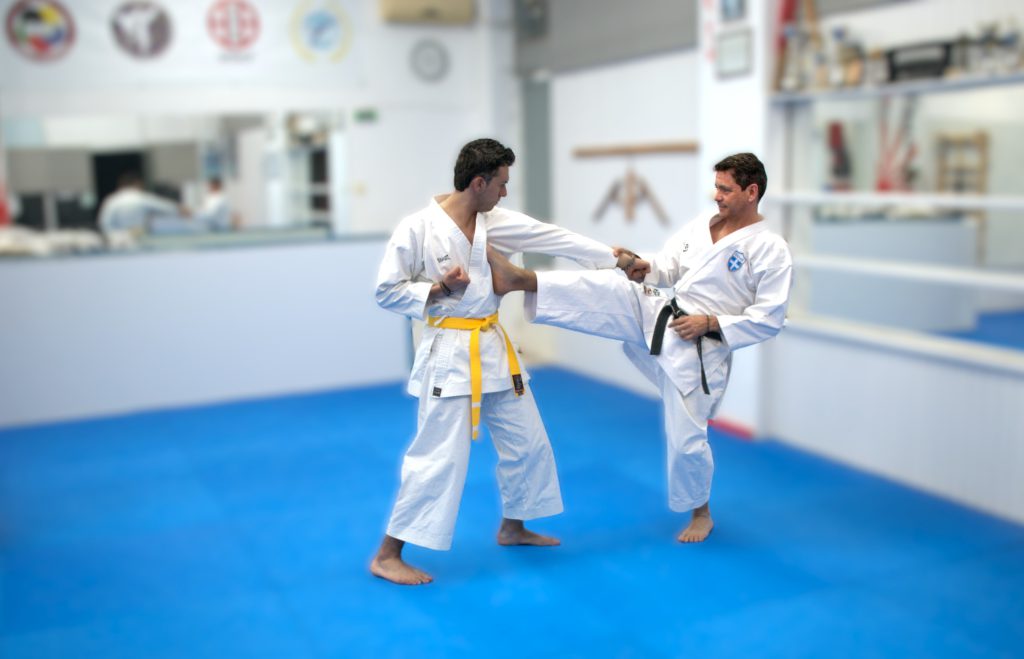
Technical Features of Shito Ryu
Shito Ryu is known for blending hard and soft techniques, making it one of the most versatile karate styles. You’ll see a mix of powerful, direct strikes (hard) and flexible, flowing movements (soft). This comes from Mabuni’s desire to keep both the toughness of Okinawan roots and the circular, responsive movements introduced by Chinese systems.
Core features of Shito Ryu’s approach include:
- Closed stance and sharp lines: Unlike other disciplines, Shito-ryu teaches a narrower stance to enhance speed.
- Fast hands and combination attacks: Shito Ryu encourages rapid hand strikes and layered defences.
- Blending force with softness: Techniques can shift from a firm block to a smooth redirection in an instant.
- Extensive kata curriculum: Shito Ryu preserves one of the largest sets of kata in Karate, each with unique origins and lessons.
Training under Soultatos, students learn to adapt between firm and gentle methods, making their Karate sharp yet fluid. They also benefit from the Sensei’s mastery of Hapkido, Filipino Fighting Arts, and other martial art forms.
Signature Kata and Applications
Shito Ryu’s kata library is one of its greatest strengths. By learning and preserving forms from both, Mabuni ensured his style kept both major Okinawan lines—Shuri-te and Naha-te.
Some notable kata practiced in Shito Ryu include:
- Pinan series: Are widely taught as foundational forms, known for their direct techniques and clear applications.
- Bassai Dai: This is a representative kata of Shuri-Te (Ankō Itosu). It focuses on breaking through an opponent’s defences with powerful, advancing moves.
- Seienchin: Is a representative kata of Naha-te (Kanryo Higaonna). It includes more circular and soft techniques, revealing the Chinese side of Shito-ryu’s heritage.
- Matsumuru Rohai: This is a representative kata of the Tomarite. This kata preserves the old Okinawa Tode-jutsu of evasive actions that combine speed and flexibility.
- Nipaipo: This kata exmplifies the white crane kata or Hakutsuru ken (Go Kenki) It emphasizes rapid hand attacks, angles, and transitions between hard and soft force.
What sets Shito Ryu’s kata apart is both depth and variety. Each form includes practical self-defence, not just fixed routines.
Sensei Soultatos guides students through these forms with a clear focus on bunkai—practical breakdowns of self-defence movements. This approach keeps kata dynamic, not just a dance but a toolkit for real-life situations. Shito Ryu’s signature is this careful blend: honoring history while training students to handle anything that comes their way.
Shito Ryu is more than a set of physical techniques—it shapes how you think, act, and deal with daily struggles. Under the guidance of teachers such as Georgios Soultatos, the focus stretches beyond the mat. The lessons work in the dojo and follow you for the rest of your day. By training in this tradition, you sharpen your mind, build discipline, and find a stronger sense of balance.
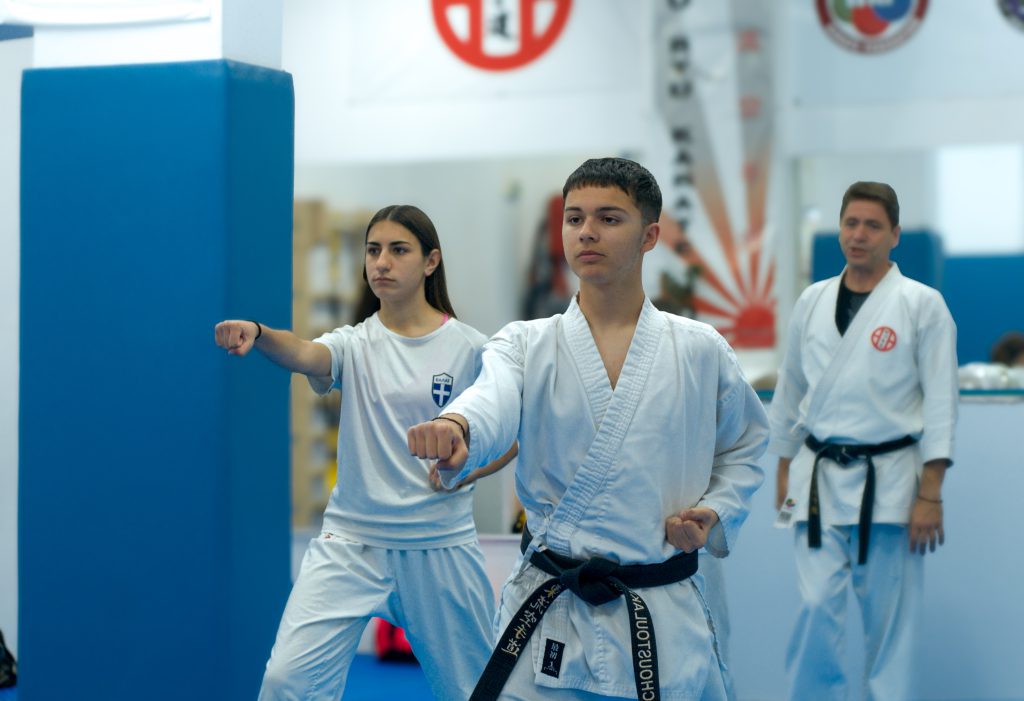
Awareness and the mind-body connection are the heart of Shito Ryu. This is called zanshin: a state of calm, focused alertness. Sensei Soultatos teaches that true Karate means being ready for anything, not just during sparring but always.
Zanshin is like a light switched on inside you. It’s developed by repeating kata and staying alert during kihon and kumite. The goal is to notice small changes—the sound of a foot on the floor or a shift in weight—without losing focus. Over time, this practice grows into daily awareness. You hear your thoughts more clearly, sense shifts in mood at work or home, and react calmly under stress.
Daily life offers plenty of “dojo moments.” Running late for a meeting? Zanshin helps you stay calm and steady your nerves. Handling a tough conversation? The same awareness you build in sparring applies to reading a person’s mood and picking the right words. For Shito Ryu students, awareness becomes a habit—sharpening focus and making life smoother.
Building Resilience and Discipline
Shito Ryu’s Karate isn’t just about the fight. It’s about building habits that hold up when life gets tough. Georgios Soultatos often says that the discipline you show on the dojo floor must match what you show at work, school, or home.
Here’s how training supports daily growth:
- Routine and Repetition: Show up every week and practice the basics often. Improvement in Karate is slow and steady, a lesson you can apply to learning any new skill or meeting long-term goals.
- Facing Challenges: No one learns a new kata perfectly the first time. Mistakes are normal. Students learn to work through frustration without giving up. This builds grit.
- Respect and Control: Every bow and pause trains you to slow down and act with intention. You learn to respond, not react—at home, school, or when dealing with pressure.
- Stress Management: Karate’s physical work burns off extra energy. Focusing on your breath during kata or sparring helps quiet racing thoughts and reduce tension.
Many students notice positive changes after a few months of steady training. They get better at sticking to routines, handling hard days, and calming themselves during stress. Shito Ryu sharpens the mind just as much as the body. The result? A steady, confident approach to whatever life brings. When these habits become second nature, Karate reaches far beyond the dojo. Training under someone like Georgios Soultatos gives each practitioner skills and a steady way forward in daily life.
Conclusion
Shito Ryu is a shining link between tradition and personal development, both physically and mentally. Georgios Soultatos’s reflects value, clarity, respect, and everyday application, helping students follow a reliable path for those seeking real improvement. Practising Shito-ryu sharpens skills and philosophies, building character and supporting lifelong growth beyond the dojo.
Thinking on all I have so far seen and studied of this martial art, I recall something that the great writer, poet, and playwright Oscar Wilde once said: “It is through art, and through art only, that we can realise our perfection.” Aristotle also had a view on striving for the ultimate goal. The Greek philosopher said, “Pleasure in the job puts perfection in the work.” Observing the attitude and skill of Georgios Soultatos, it’s easy to see both of these principles at work.


